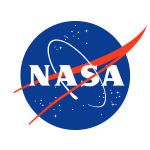Center Innovation Fund: JPL CIF
Enabling Nanosat Mobility and Autonomy for Small Bodies Exploration, Year 1
Project Description
Develop control and planning algorithms for a science-driven spacecraft/rover hybrid, such that the rover is able to autonomously reach designated targets and point instruments traverse performance meets science objectives of 20-30% of traverse distance.
More »
Anticipated Benefits
Advances surface mobility autonomy technologies for small bodies to enable more controlled surface operations. Focusing on science-driven requirements enables us to address the more compelling investigations Some component technologies (e.g. instrument placement, spike/terrain modeling, deployment, and system engineering) are relevant to other small body surface missions. Advances state-of-the-knowledge compared to prior work on low-gravity mobility such as that performed for the MINERVA rover on the Hayabusa mission. Allows for controlled, planned motion as opposed to random/chaotic motion.
More »
Primary U.S. Work Locations and Key Partners
| Organizations Performing Work | Role | Type | Location |
|---|---|---|---|
| Jet Propulsion Laboratory (JPL) | Lead Organization | FFRDC/UARC | Pasadena, California |
| Stanford University (Stanford) | Supporting Organization | Academia | Stanford, California |
Primary U.S. Work Locations
-
California

Suggest an Edit
Recommend changes and additions to this project record.

